AOTM BOMBSHELL
AOTM (Asians On The Moon) BOMBSHELL forYOKOHAMA BOOGIE: UNDER THE INFLUENCE
at ZAIM, YOKOHAMA, JAPAN 2007
5-day performance, installation, comic book
curated by Kóan Jeff Baysa
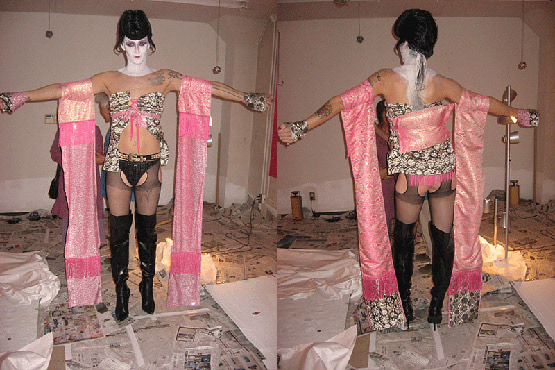
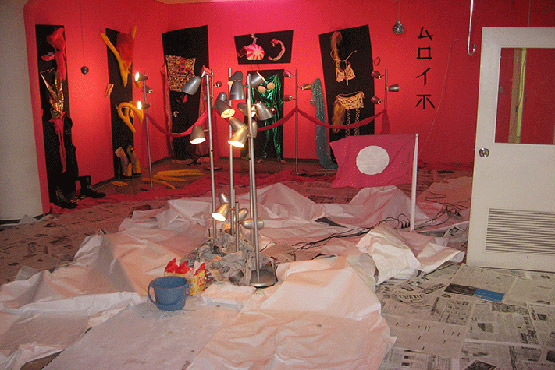

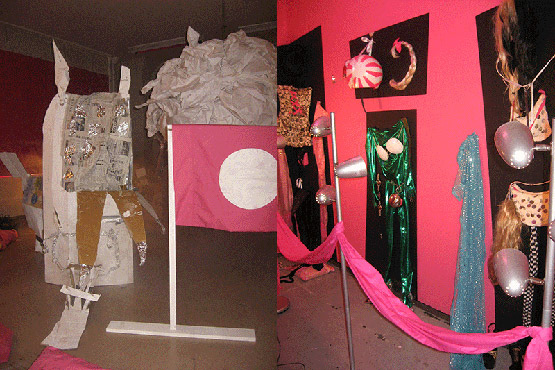
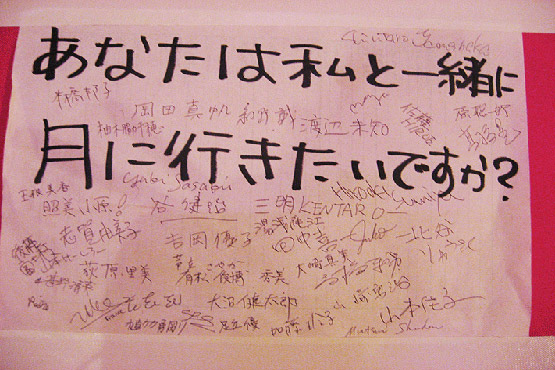
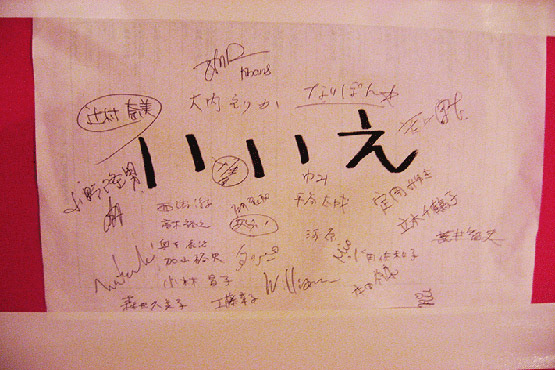


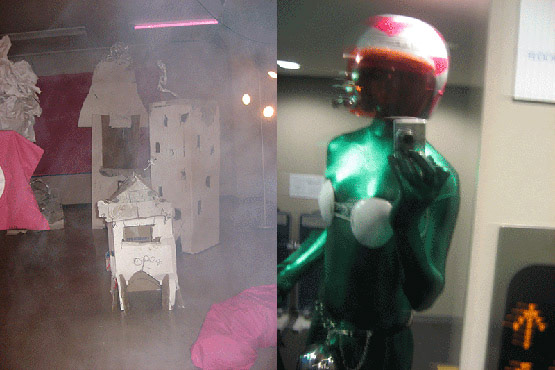
photos by Klaus Schaffler and Aaron Sheppard
videos by DJ Shadow and Klaus Schaffler



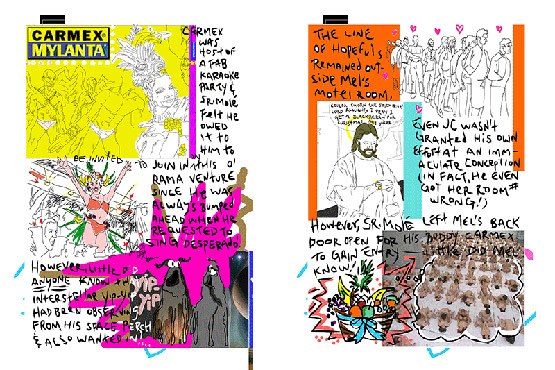
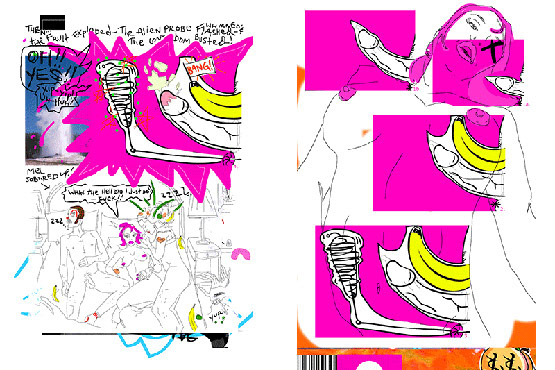
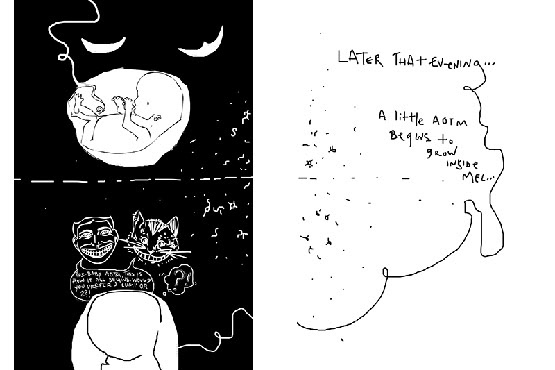

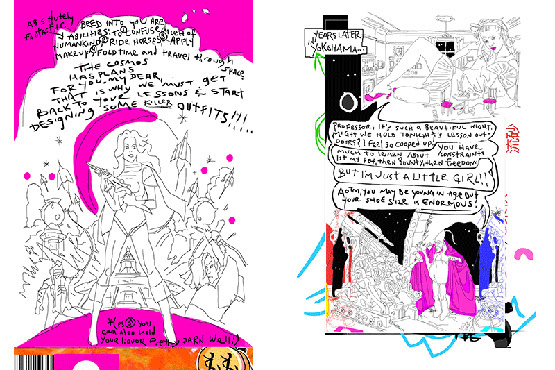
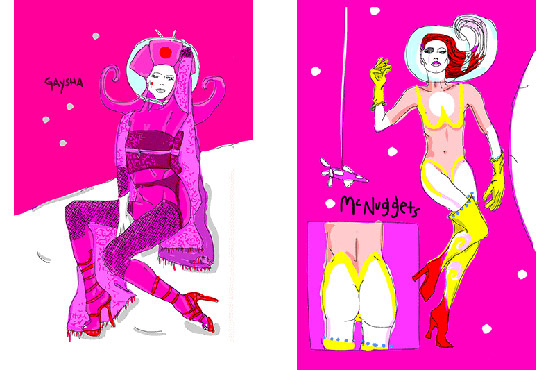
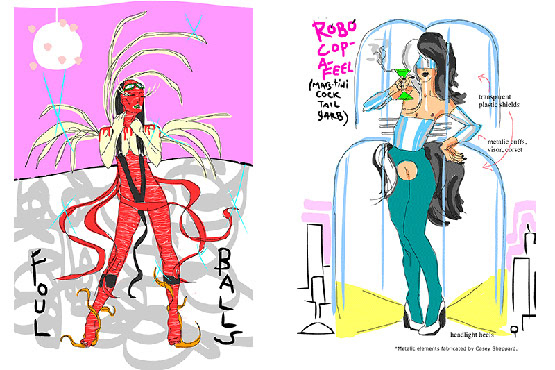

I chose AOTM BOMBSHELL as the title of this piece combining English language meanings and connotations with its characters visually resembling those of Japanese kana: AOTM = ムロイホ. This is an acronym for Asians On The Moon and is the major concept for my installation, Yokohama being the first of earth to colonize the moon. AOTM (pronounced “atom”) also serves as the name of a large female persona that will facilitate this mission. This project/ persona is a product of opposites converging: Western with Eastern influences; female with male personalities; glitz/glamour with technology and ritual-based practices, Las Vegas and Yokohama morphing into one collective unit promoting ideal notions I as artist hold for each place.The word atom in the english language relates to building blocks, energy and destruction in its weapon form. Atomic radiation was the creator of such oversized cult demolitionists as Godzilla (in Japan) and The 50ft Woman (in America). In English, Adam (pronounced nearly exactly the same as atom) is believed by the Christian religion to be the first man on earth. In this exhibition, AOTM is the first “bombshell” (or sexually iconic woman) on the moon. Given my tall physical appearance and affinity for wearing women’s clothes I thoughtthis concept an appropriate way to relay ideasof globalization specifically considering these two cultures. My goal in developing the AOTMpersona is to actively portray collective constructive ideas and actions rather than promoting destructive forces normally associated withanything especially large and atomic.I created a flag that references the Japanese national flag insofar as instead of a red sun on a white background it represents a white moon on a hot pink background. Pink represents femininity, playfulness, eroticism and flare. Other references to pink include: Elvis’ pink Cadillac, Barbie dolls, pink triangles associated with homosexual profiling and/or pride, Bubblegum Manga, Pachinko advertising …called shocking pink in the 1930s, hot pink in the 1950s, and kinky pink in the 1960s...[it] has appeared in the vanguard of more than one youth revolution...to some it sings, to others it screams. It is often used as a slang term to refer to the female genitalia. This color has always been popular among the avant-garde. Soft-core adult films in Japan are often called pink movies because the color cherry blossom pink is associated in Japan with the vagina.
-Aaron Sheppard, from ARTIST EXHIBITION STATEMENT

